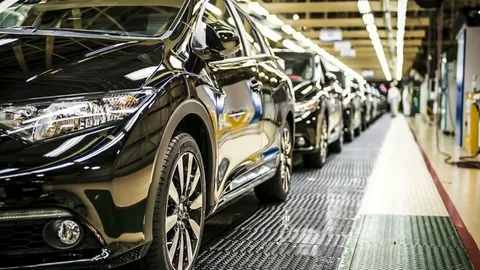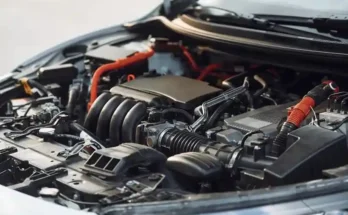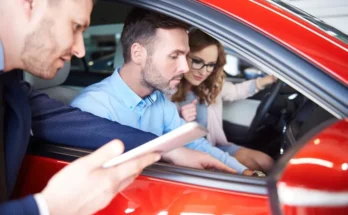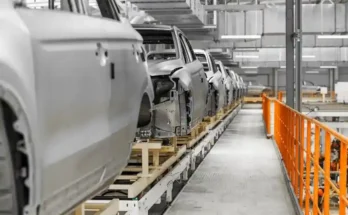Automobiles have long been more than just machines on wheels. They are cultural icons, symbols of freedom, and lifelines of economies around the world. From the first combustion engine-powered vehicle by Karl Benz in the late 19th century to the sleek, AI-driven electric cars of today, the journey of the automobile is one of innovation, reinvention, and relentless momentum. But what does the future hold for this ever-evolving marvel?
As we stand at the cusp of another transformation, it’s clear that the automobile is not just adapting to change—it’s driving it. We’ll delve into how technology, sustainability, and human experience are redefining the automobile for generations to come.
The Digital Dashboard:
Gone are the days when an automobile’s most impressive feature was cruise control. Today’s vehicles are equipped with AI-powered systems, voice assistants, and predictive analytics. These smart features not only enhance safety and convenience but also personalize the driving experience. Your car can now recommend a route based on your habits, detect fatigue in your voice, and even sync with your smart home. Companies like Tesla, Mercedes-Benz, and Lucid Motors are pioneering software-defined vehicles that receive over-the-air updates, much like a smartphone. These constant upgrades allow a car to improve long after it leaves the showroom floor—an idea that would’ve sounded like science fiction just a decade ago.
Self-driving technology is perhaps the most disruptive advancement in the automotive world. Though full autonomy is still being fine-tuned, we already see semi-autonomous systems making everyday driving easier. Tesla’s Autopilot, GM’s Super Cruise, and Waymo’s fully autonomous taxis are proving that cars can indeed think for themselves. But autonomy is not just about convenience. It’s about safety. According to the WHO, over 1.3 million people die in road accidents every year, most due to human error. By handing over control to an intelligent, tireless driver, we can make roads safer for everyone.
The Eco-Friendly Revolution:
-
Electric Vehicles
Electric vehicles (EVs) are not just a trend—they’re a movement. With climate change at the forefront of global conversations, the automobile industry is undergoing an electric renaissance. Governments are offering incentives, manufacturers are investing billions, and consumers are embracing the shift.
EVs eliminate tailpipe emissions, reduce dependence on fossil fuels, and operate more efficiently than their gas-powered ancestors. As battery technology improves, concerns around range anxiety are shrinking fast. Models like the Lucid Air and Tesla Model S now boast ranges of over 400 miles on a single charge.
-
Sustainable Manufacturing
But building a cleaner vehicle goes beyond the fuel source. Automakers are now focused on sustainable production practices. Recycled materials, vegan leather interiors, solar-powered factories, and closed-loop supply chains are becoming standard in the manufacturing process.
Brands like BMW and Volvo are leading the charge with carbon-neutral plants and extensive use of recycled content. Even tire companies are getting in on the act, using dandelion rubber and soybean oil to create more sustainable treads.
The Soul of Design:
-
The Return of Emotion in Car Design
While technology and sustainability drive innovation, design remains the heart of any automobile. In an age of AI and algorithms, automakers are returning to what made people fall in love with cars in the first place: emotion.
Designers are blending retro inspiration with futuristic flair to create vehicles that don’t just move bodies, but stir souls. Think of the reborn Ford Bronco, the electric Mustang Mach-E, or the sleek lines of the Polestar 2. These cars evoke a sense of nostalgia while signaling progress.
-
Interior Innovation
Step inside a modern automobile, and you’re no longer stepping into a simple cockpit—you’re entering a digital lounge. With panoramic touchscreens, ambient lighting, massage seats, and AR windshields, the interior of today’s car resembles a sci-fi movie set.
In fact, as vehicles become more autonomous, the interior space is being reimagined altogether. Without the need to focus on driving, passengers can enjoy entertainment, work, or even sleep during commutes. This shift is transforming the automobile from a tool of transportation into a mobile extension of your living space.
Connectivity on the Go:
-
V2X
Vehicles are no longer isolated machines—they are becoming interconnected nodes in a larger digital ecosystem. Vehicle-to-Everything (V2X) communication allows cars to talk to traffic lights, other vehicles, pedestrians, and even infrastructure.
This technology can reduce congestion, prevent accidents, and improve fuel efficiency by allowing real-time data sharing. Imagine a world where your car slows down before a hidden curve because it “knows” there’s ice ahead, or where it automatically reroutes you around an accident before you even hear the sirens.
-
In-Car Digital Ecosystems
Beyond external communication, in-car ecosystems are evolving rapidly. Integrated apps, streaming platforms, health monitors, and personalized AI assistants are transforming cars into smart devices on wheels.
Voice commands can adjust your climate settings, select your favorite podcast, order coffee at the next stop, or even start a Zoom meeting on the go. It’s not just about getting from point A to B anymore—it’s about enjoying every moment in between.
A New Era of Ownership:
The concept of car ownership is changing. Younger generations value access over possession, and the automobile industry is responding with flexible alternatives. Subscription services, such as Porsche Drive and Care by Volvo, offer users the ability to switch cars on demand, often with maintenance and insurance included.
Ride-sharing, car-sharing, and autonomous taxi services are also shifting the landscape. Companies like Uber, Lyft, and Cruise are positioning themselves not just as transportation providers but as mobility platforms for the future.
Another innovative trend is peer-to-peer car sharing. Platforms allow individuals to rent out their personal vehicles when they’re not in use, turning idle assets into income generators and reducing the need for new vehicle production.
Conclusion:
The automobile has always been a mirror of society—reflecting our dreams, our challenges, and our progress. Today, as it undergoes its most profound transformation in over a century, it’s once again becoming a symbol—not of raw horsepower or flashy design—but of intelligence, responsibility, and possibility.
Whether you’re a die-hard gearhead, a tech enthusiast, or someone just looking for a smarter commute, there’s never been a more exciting time to pay attention to what’s on four wheels. The future of the automobile is not just fast—it’s electric, connected, and breathtakingly human.
And if history has taught us anything, it’s that the ride is only just beginning.




